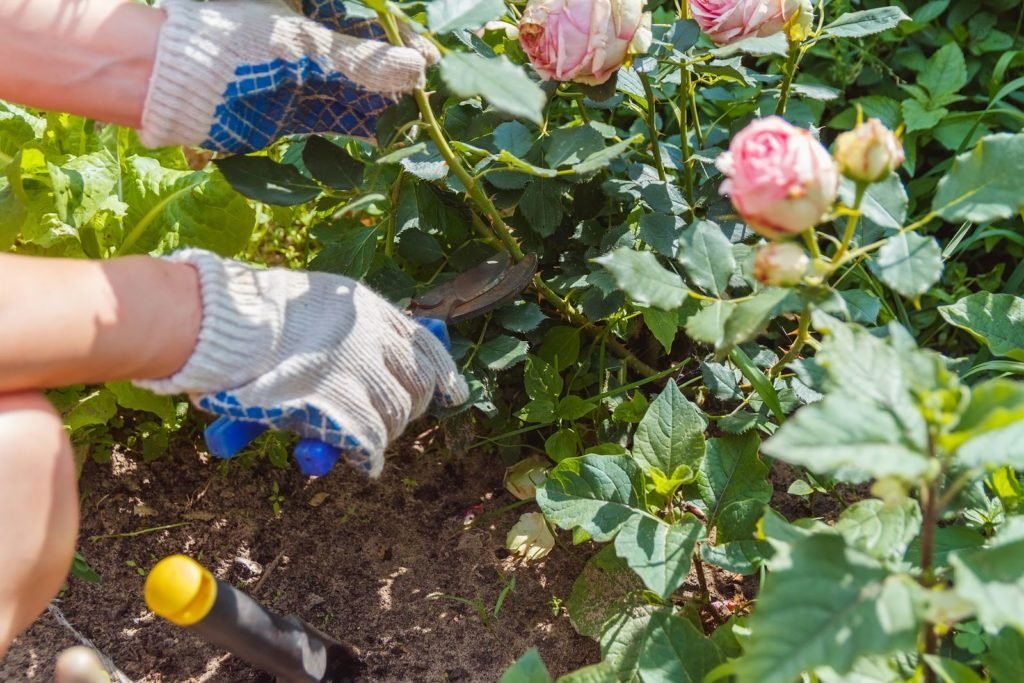Summer Care for Roses
Your roses are planted, and they’ve already delivered a stunning first flush of blooms—now what?
As the summer heat sets in, it's important to give your roses the extra care they need to stay healthy, vibrant, and ready for their next round of blossoms. Here are key steps to help your roses thrive during the hot summer months:
🌿 Water, Water, Water
Water is the most important factor in growing exceptional roses. While each garden's watering needs vary depending on soil, weather, and drainage, one rule always applies: Never let your roses dry out.
Roses have two types of roots:
Anchor roots: Deep roots that hold the plant in place.
Feeder roots: Delicate, mesh-like roots near the soil surface that absorb nutrients and water.
These feeder roots dry out quickly—especially in hot weather—so consistent watering is essential. Deep, slow watering is best. If you're unsure whether you're watering enough, dig down a few inches to check for moisture.
🍂 Mulch for Moisture & Protection
Mulching helps retain soil moisture, moderate soil temperature, and reduce weed competition. Apply 2–3 inches of organic mulch after removing any weeds. Be sure to:
Spread mulch evenly over the soil surface.
Keep mulch a few inches away from the base of the plant to avoid rot.
✂️ Deadhead to Encourage New Blooms
Deadheading—removing spent blooms—is an easy and effective way to:
Encourage repeat blooming.
Improve the overall look of the plant.
Prevent disease and discourage seed formation.
By removing faded flowers, you signal the plant to keep blooming rather than going to seed.
🌹 Don’t Forget to Feed
Many rose growers fertilize in spring but forget midsummer feeding—which roses need to keep blooming strong. Roses are heavy feeders, and all those gorgeous blooms take energy!
Monthly Feeding: Apply ½ cup of an organic fertilizer such as Rose-tone, Plant-tone, Purely Organic, or Mills Magic.
Late August Boost: Use ½ cup of a fertilizer high in phosphorus and potassium (like 7-20-20) to support root development and prepare the plant for winter.
Fertilizing Tip: Always water before and after applying fertilizer. Never apply to dry soil. Spread fertilizer evenly to the drip line, then gently scratch it into the soil.
🛑 Stop fertilizing after late August to allow your roses to harden off and prepare for dormancy.
🐛 Watch for Pests
Summer pests can wreak havoc on rose bushes if not addressed early. The most common offenders are:
Spider mites: Control by spraying the undersides of leaves with a strong jet of water. Repeat as needed.
Japanese beetles: Remove by hand or treat with an appropriate spray.
Thrips: Tricky to control—monitor closely and treat with a targeted insecticide if needed.
🌧️ Prevent Blackspot
In humid or rainy weather, blackspot is the most common rose disease in our area. It thrives with excess moisture, especially when roses are watered from overhead.
Spray regularly with a fungicide labeled for blackspot.
Rotate fungicides to prevent resistance.
Avoid overhead watering to minimize leaf wetness.
🌞 Keep Roses Happy All Summer
With the right care—water, mulch, food, and a watchful eye—your roses will reward you with continuous blooms and lush, healthy growth well into fall.
Happy rose gardening! 🌹✨



